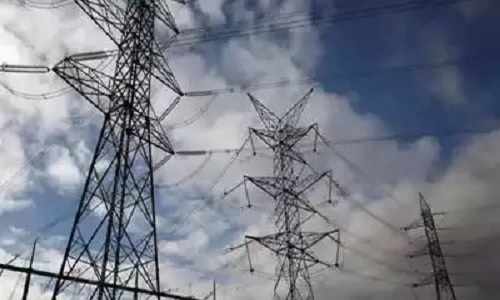Weathersurprises: MSEDCL’s power plans for summer go for a toss
| Date :07-Jun-2024 |

By Sagar Mohod
Climate resilience is the buzzword in planning, but the State-run Maharashtra State Electricity Distribution Company Limited (MSEDCL) is waking up at the fag end of summer, which has proved to be unpredictable, especially in terms of power demand in the Nagpur Circle, leading to a cascading effect on the system. Talking of Nagpur, the sudden jump in consumption by 100 MW left the system gasping for air. This resulted into power failure becoming a daily feature. Not that planners don't foresee the rise, but it is taken at industrial load which, as per officers, is generally 10 per cent on annual basis. This time, however, the warming of the planet and erratic weather patterns throughout the world also had an effect on the second capital of the State. The month of May was horrible in every single locality of the city. Those in adjoining periphery faced prolonged hours of power cuts. Intense humidity, rather than heat, led to massive surge in power demand and with that the MSEDCL’s planning went for a toss.
For example during the month of June 2023 the total power demand in second capital of State and its periphery was 712 MW. This year during May end itself the load shot-up to 815 MW putting officials in a tight spot. This huge gap in demand and supply is directly attributed to global warming that has thrown spanner in smooth working of weather pattern as now it changes at the drop of a hat. MSEDCL officials said they have learnt a lesson and now Headquarters would surely draw-up measures for streamlining the distribution system. But it still quite early as DPR would needed to be prepared and funds lined-up to upgrade the system. Apart from that the country's industry is struggling to meet the demand from all Discom where RDSS are being implemented. So even if MSEDCL decides to take extra measures, it will still require quite some time to execute the works on ground level. In first place, there was no planning to manage such a huge swing in power demand as for the same the entire system would now need massive upgradtion, new transformers would be needed to distribute the load effectively.
Also in last few years with people finances improving each household is now opting for air conditioners. So while the system continues to lag behind, the consumers are increasingly opting for power guzzling equipments. Not that officials were sitting in one place, they tweaked the frequency of transformers to manage the increased load. However these measures proved temporary and power outages started increasing day after day. With the extra demand, MSEDCL officials have to went for emergency measures to avoid bursting of transformers, explained another officer. For the same rotational power cuts were undertaken as transformers could not handled such huge load. So at some places power cuts of few minutes would occurred every now and then as field units went for change over from one transformer to another. This happened on real time basis but sometimes situation went out of hand leading to breakdowns that only added to discomfort of citizens. And most of the time the power cuts occurred during night hours and the pattern was fixed. Mostly in dense residential localities of South Nagpur, the power cuts have now become a part and parcel of their daily life, sometimes people lived in darkness entire night. The reason most of the transformers in this region are working at 115 per cent of their capacity which is bound to resulted in breakdown. As per norms, a transformer has to work at 80 per cent of its capacity and then only it would transmit power efficiently.
Another issue that is complicating upgrading the system is lack of co-ordination between different agencies. The biggest hurdle is vacant land to erect new sub-station, both for MAHATRANSCO and also MSEDCL. Similarly difficulties are faced by power utilities whenever they need to dig-up road to lay the underground cables. This issue is most prominent in South Nagpur area of city where new colonies are expanding at rapid pace, particularly on the outskirts. Further a problem with rapid expansion of power infrastructure is need to balance the power demand. In case new transformers are put-in and they do not have adequate load then also the system could trip. This is due to balancing factor and each of the transformer must have minimum load to ensure it proper working. All the sub-stations are now inter-connected and the ring to work properly, the demand must be equitable. So now a long term policy keeping in mind the climate challenges needs to be formulated to ensure round the clock availability of power. Though there is now no issue on generation front, the transmission and distribution areas remains critical to efficient delivery mechanism, felt the officials.
